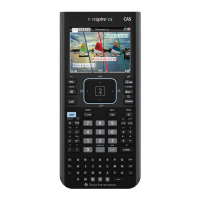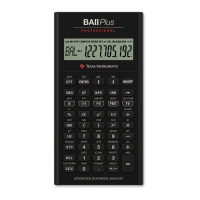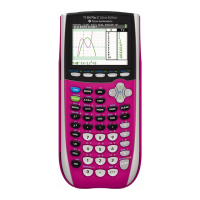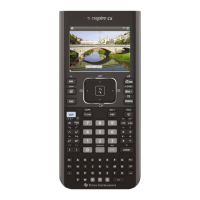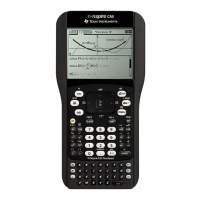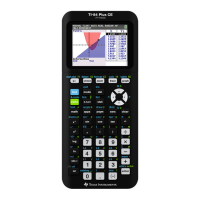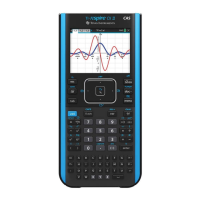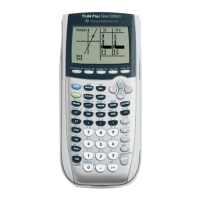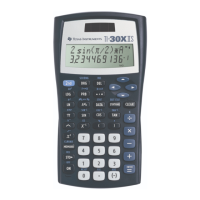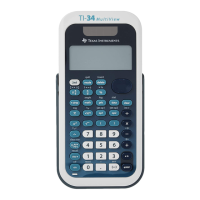40 CBLé System Guidebook
About CMD3—Sample and Trigger Setup
(Continued)
Number of Samples
This parameter lets you select the number of samples to collect.
(Default:
1
)
1
–512
L1
Number of samples to collect. If Statistics is selected in
CMD1
,
the upper limit is 256.
Causes continuous data collection following each
Get(
,
GET
or
Input "CBLGET"
instruction from a calculator. This value is
necessary for real-time data collection.
Note: When Number of Samples is L1 for real-time display of collected
data:
¦ Only one channel can be active.
¦ Post-processing will not operate (pages 29, 31).
¦ Record Time will not operate (page 44).
¦ Filter will not operate (page 46).
Trigger Type
This parameter lets you select a specific point at which to start
collecting data. You can trigger CBL to start collecting data at a specific
point on the actual data, or on an external clock. The function performed
by Trigger Types 2 to 5 depends on whether or not period or frequency is
selected in
CMD1
. (Default:
1
)
0 None.
The following triggering information applies when the Number of
Samples is L1 and Trigger Type is 0:
¦ If Sample Time is less than or equal to 0.20 seconds, then a
sample will be taken immediately after receiving the Sample and
Trigger Setup command (
CMD3
). Subsequent samples will be
taken immediately after a
Get(
or
Input "CBLGET"
instruction is
received from the calculator.
¦ If Sample Time is greater than or equal to 0.25 seconds, then the
first sample will be taken at the sample time after the Sample and
Trigger Setup command is received.
1
Manual. Lets you manually start data collection by pressing N.
Manual triggering (Trigger Type 1 or 6) is useful when you want to
set up the CBL and then disconnect it from the calculator to collect
the data. The CBL waits for you to press N before starting data
collection.
